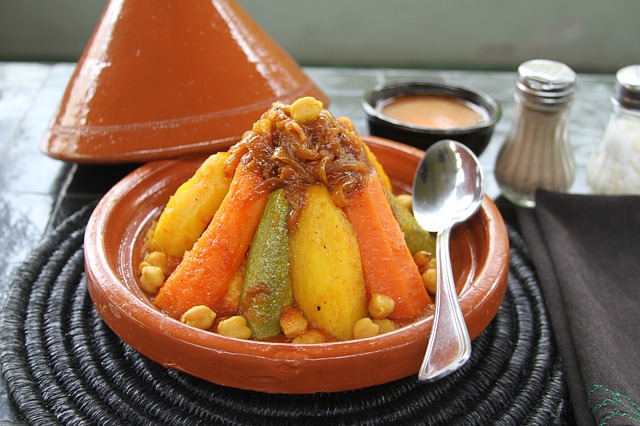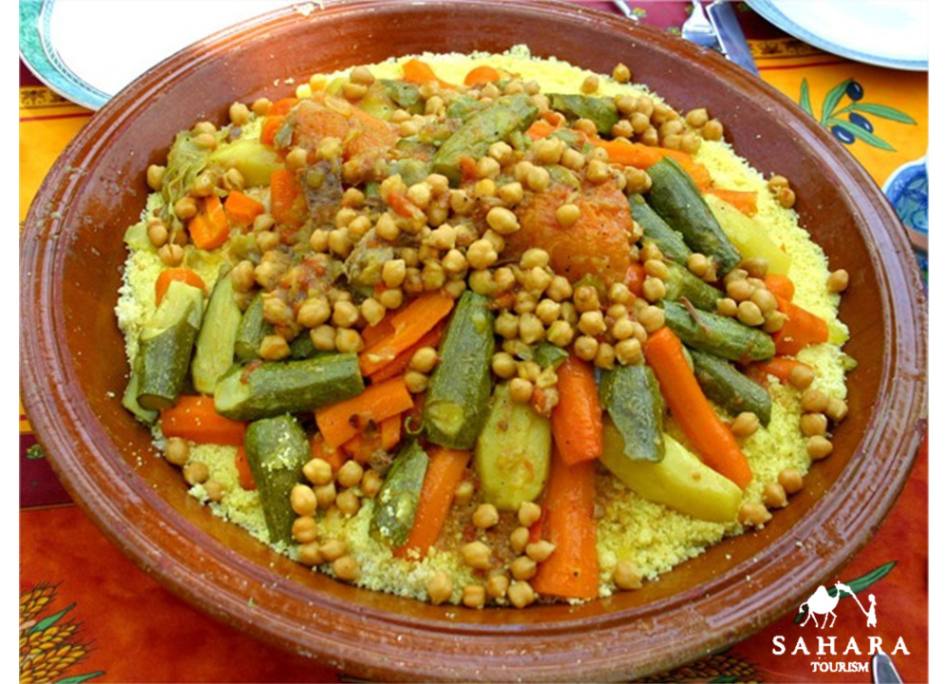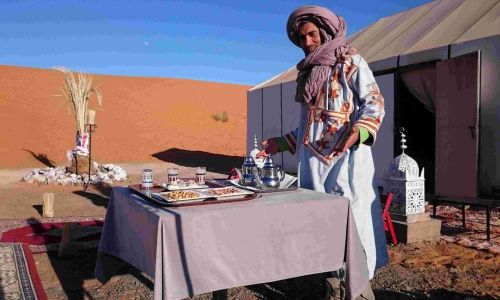Thus, traditionally, couscous is a clever mixture of fine semolina, coarse semolina, flour and water. And to which sometimes chickpeas are added. Today, thanks to technical progress in manufacturing, we have pre-cooked semolina. It is true that it is only industrial semolina, but it has the merit of saving us a lot of time. But if you still want to use handmade semolina, you will find it in oriental or specialized grocery stores.
Originally, the recipe for couscous only included a variety of meat. It was either ram, camel, fish, chicken, … etc… And in general, the pieces that were cooked on a low heat were preferred. As for vegetables, it depended on what people had on hand or even on the season: courgettes, carrots, potatoes, peppers, pumpkin, turnips, chard, celery, cabbage, … etc. As for spices, ras-el-hanout and harissa were easily used. And depending on the type of couscous, other spices like ginger, cinnamon or different peppers could be used. Finally, you could add raisins or caramelized onions to the dish.
The traditional preparation of semolina follows very elaborate rules and procedures. Therefore, the raw semolina must already be prepared. The latter is spread on a large plate to make it work better. A dash of olive oil is poured over it and the semolina is peeled with the fingers. The olive oil will make the seeds separate from each other. Then add water (preferably cold so as not to start cooking) and roll the seeds back up between the palms of your hands. The water will start to make the raw semolina swell and this will make cooking easier. Then, leave a brief pause before steaming the semolina. Ideally, we should put it in a cloth and cover it with it, before putting it in the steamer basket. The cooking time is about 15 minutes. The couscous is then poured back into the gessra and reworked by adding a little water. Then, we put it back in the steam basket for another 15 minutes. This operation can be repeated 2 or 3 times. And in the final cooking, a kind of rancid butter (the “smen”) is added, it is shelled for the last time and it is ready.
Please note that this cooking technique is not suitable for pre-cooked semolina, as only one cooking step is required. As for the stale butter used to give a particular flavour to the semolina, it can be replaced by normal butter. And finally, you can salt your semolina or not, but it is like the question of whether or not to salt the water of the pasta: it is a question of taste.






